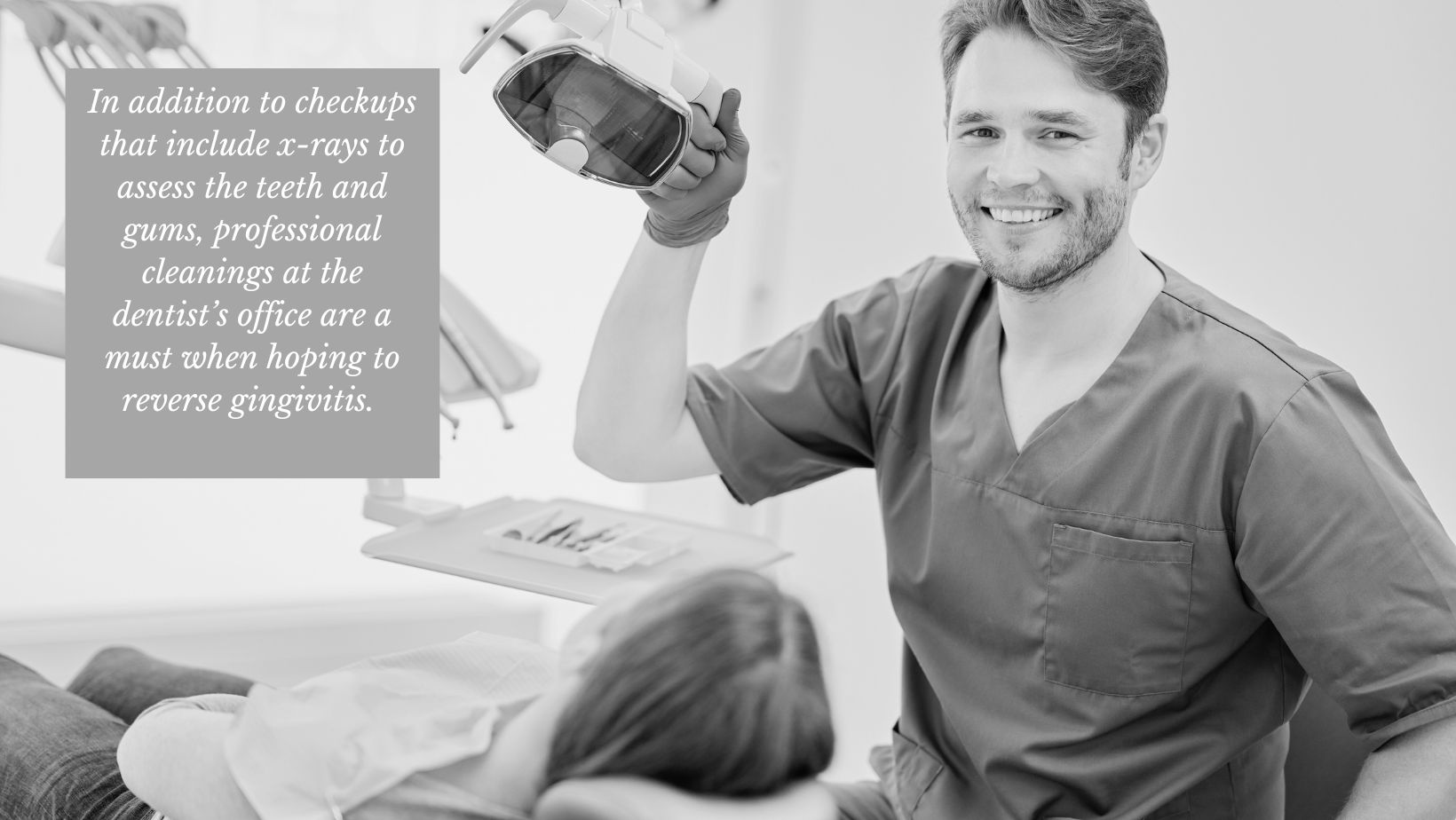Gingivitis is the earliest stage of periodontal disease—also called gum disease. It shows up as redness, swelling, and irritation of the gum tissue. Is gingivitis reversible? Luckily, it is, but it’s important not to wait too long. Left untreated, gingivitis can lead to a much more serious condition called periodontitis, which can result in bone deterioration and tooth loss.
Knowing how to reverse gingivitis—and acting fast—is the best way to restore healthy teeth and gums.
What Causes Gingivitis?
Like tooth decay, gum disease can develop when bacteria build up on teeth and form a sticky coating called plaque. Plaque is normal, but if plaque buildup isn’t cleaned off of the teeth, it can start to eat away at tooth enamel and form cavities. When it spreads below the gum line and attacks the gum tissue, it can result in gingivitis and other periodontal diseases.
Typical symptoms of gingivitis are red, swollen gums that bleed easily, pain or sensitivity, bad breath or a bad taste in the mouth, and receding gums.
Routine dental care that includes regular brushing and flossing, along with professional cleaning at dental checkups, is usually enough to keep plaque and infection-causing bacteria at bay. But even those who take good care of their teeth can develop gingivitis. According to the CDC, more than 47% of adults aged 30 and up suffer from some form of gum disease. This is partly because along with poor dental hygiene, other factors can contribute to gum disease too, such as:
- Smoking
- Diabetes
- Crooked teeth that are hard to clean
- Poor nutrition and vitamin deficiencies
- Certain medications
- Ill-fitting dentures or bridges
- Hormonal changes
- Heredity
How easy it will be to reverse gingivitis depends on its cause and how long it has been allowed to spread. For example, changing brushing habits will be easier than controlling an underlying health condition like diabetes.
Can You Reverse Gum Disease Without Going To the Dentist?
For mild cases of gingivitis, there are steps a patient can take at home to improve their gum health. For some, stepping up oral hygiene might be enough to reverse the process and get gums back to a healthy condition.
- Brush at least twice a day
- Consider switching to an electric toothbrush
- Clean between teeth daily with floss or a water flossing tool
- Use antimicrobial mouthwash formulated for gum health
- Get dental checkups every six months
In addition to practicing better oral care, it is helpful to break any bad habits that contribute to gum disease. Making lifestyle changes such as avoiding tobacco, eating a healthy balanced diet, and limiting sugar all promote healthier gums.
How to Reverse Gingivitis With a Dentist’s Help
In addition to checkups that include x-rays to assess the teeth and gums, professional cleanings at the dentist’s office are a must when hoping to reverse gingivitis.
For more stubborn cases of gingivitis, dentists may recommend deep cleaning therapy. This includes periodontal scaling and root planing. Scaling is a procedure that scrapes plaque away below the gum line, all the way down to the tooth’s root. Root planing is a process that smooths the surface of the root after scaling so the gum tissue can reattach and heal.
Scaling and planing are more invasive than a typical cleaning. The procedure can be painful, so patients are usually given a local anesthetic. Antibiotics are often prescribed after these deep cleanings to help fight infection from bacteria that might be left behind in hard-to-reach places.

What If Gingivitis Isn’t Treated?
If patients do not increase their oral care efforts and do not see a dentist, their gingivitis is unlikely to go away. Instead, the gums will become even more inflamed and infected, eventually resulting in a more serious gum condition: periodontitis.
Can you reverse gum disease if it has advanced beyond gingivitis to periodontitis? Unfortunately, no. Periodontitis affects the bone and gum tissue that holds the teeth in place. In the worst cases, teeth will loosen and fall out, which can result in additional health issues.
Gum surgery may be recommended for periodontitis. A “pocket procedure” can reduce the spaces under the gumline that can fill up with bacteria. A bone graft is another procedure that may be able to restore some of the bone needed to stabilize the teeth. While these treatments may help to regenerate lost bone or regrow healthy gum tissue, they are not a cure for the underlying periodontal disease. At best, the dentist will be able to manage the patient’s gum disease, but they will not be able to make it go away.
Gingivitis is Reversible, But Prevention is Best
The possibility of a weakened, deteriorating jawbone and losing teeth highlights the need to treat gingivitis seriously, and to not allow it to progress into something worse. Gingivitis is reversible when treated as soon as symptoms appear. Better yet, patients can avoid getting gingivitis in the first place by prioritizing their dental health and overall well-being.
When caught early, knowing how to reverse gingivitis will stop gum disease before it does too much damage. Not only will good dental hygiene keep teeth safe from cavities, but it will also protect gums from developing gingivitis. This includes thorough brushing, daily flossing, and regular dental visits.
If gums become sensitive, red, or swollen, see a dentist right away. They can assess the situation and will likely suggest a professional cleaning and any other treatment while gingivitis is reversible.
If you are experiencing the early signs of gum disease, use our online search tool to make an appointment with a dentist near you.


